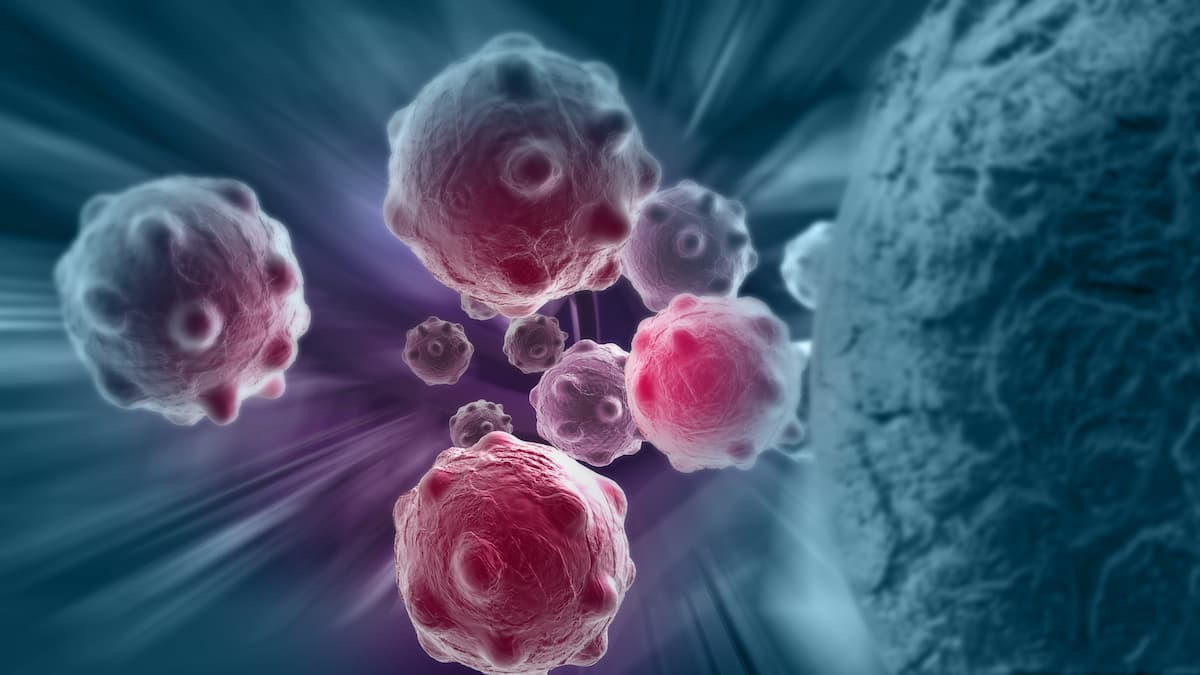Cyclosporin/Cyclophosphamide Is a Potential New SOC in GVHD Management
Treatment with cyclosporin/cyclophosphamide following allogeneic stem cell transplant had improved efficacy vs cyclosporin/methotrexate in patients with high-risk hematologic cancers.
Data for overall survival were immature but are currently favoring the cyclosporin plus cyclophosphamide regimen, explained lead study author David Curtis, MBBS, PhD, FRACP, FRCPA.

Cyclophosphamide plus cyclosporin, a calcineurin inhibitor, significantly improved graft-vs-host disease (GVHD)–free relapse-free survival (RFS) compared with standard prophylaxis in patients with aggressive blood cancers who are undergoing stem cell transplant from a matched related blood stem cell donor with reduced-intensity or myeloablative conditioning, according to results from the phase 3 BM12 CAST trial (ACTRN12618000505202) presented during the European Hematology Association 2025 Congress.1
Findings, which were initially presented in a press briefing during the meeting and simultaneously published in the New England Journal of Medicine,2 showed that the median GVHD-free RFS was 26.2 months (95% CI, 9.1-not reached) in the cyclophosphamide plus cyclosporin arm (n = 66) compared with 6.4 months (95% CI, 5.6-8.3) with standard cyclosporin/methotrexate (n = 68; HR, 0.42; 95% CI, 0.27-0.66). At 3 years, 49.1% (95% CI, 36%-61%) of patients who were treated with posttransplant cyclophosphamide and cyclosporin remained free from GVHD compared with 14.2% (95% CI, 6%-25%) for those who received cyclosporin/methotrexate.
Data for overall survival (OS) were immature but are currently favoring the cyclosporin plus cyclophosphamide regimen, explained lead study author David Curtis, MBBS, PhD, FRACP, FRCPA, a clinical hematologist and director of malignant hematology research at the Australian Centre for Blood Disease, Monash University, and Alfred Hospital in Melbourne, Australia. The 2-year OS rates are 83% with cyclosporin/cyclophosphamide and 71% with cyclosporin/methotrexate (HR, 0.59; 95% CI, 0.29-1.19).
“Cyclosporin and cyclophosphamide offer a new standard of care for prevention of GVHD for patients with aggressive blood cancers undergoing transplant from a matched related blood stem cell donor,” Curtis said during the press briefing. “The study demonstrates the power of cooperative group clinical trials in addressing patient-specific care and outcomes.”
For patients with aggressive blood cancers, allogeneic stem cell transplantation provides curative potential; however, GVHD poses a significant treatment burden to patients, and effective options are needed beyond the current combination of cyclosporin plus methotrexate, mechanistically designed to suppress the donor immune system.
The randomized trial, which was a cooperative group study with the Australasian Leukaemia & Lymphoma Group (ALLG), enrolled 134 patients with acute leukemia or myelodysplastic syndrome across 10 different transplant centers in Australia and New Zealand. Investigators sought to determine whether replacing methotrexate with cyclophosphamide could help improve the prevention of GVHD in patients post transplant.
To be eligible for enrollment, patients had to be between 18 and 70 years, have previously undergone an allogeneic stem cell transplant from a matched related donor, and have an aggressive blood cancer. Patients continued in follow-up for 3 years.
The primary end point was GVHD-free RFS.
During a question-and-answer session following the press briefing, Curtis highlighted that he and his team did not see an increase in adverse effects (AEs), specifically cardiotoxicity, which is generally a concern in this patient population. Additionally, this is one of the first studies to show this safety update, he added.
Data showed that the cumulative incidence of grade 3/4 acute GVHD at 3 months was 3% (95% CI, 1%-10%) with cyclophosphamide/cyclosporin compared with 10% (95% CI, 4%-19%) with methotrexate/cyclosporin. After the first 100 days following transplant, the rates of serious AEs were similar across arms.
“Our cooperative group is very proud to have delivered such an impactful clinical trial for patients who undergo bone marrow transplantation,” Delaine Smith, CEO of ALLG, noted in a press release of the data.3 “Professor Curtis has led a highly motivated research team across Australia and New Zealand, and their efforts have catapulted this century's biggest improvement in bone marrow transplantation. We are thrilled that patients around the world will now have better treatment…[and] better lives.”
References
- Curtis DC, Purtill D, Lewis C, et al. A phase 3 randomised trial of post-transplant cyclophosphamide for GVHD prophylaxis in matched sibling donor peripheral blood stem cell transplantation: the ALLG BM12 CAST trial. Abstract presented at: European Hematology Association 2025 Congress; June 12-15, 2025; Milan, Italy. Abstract S103.
- Curtis DC, Patil SS, Reynolds J, et al. Graft-versus-host disease prophylaxis with cyclophosphamide and cyclosporin. N Engl J Med. Published June 13, 2025. doi:10.1056/NEJMoa2503189
- New clinical trial established post-transplant cyclophosphamide as superior GVHD prophylaxis in matched sibling stem cell transplant. News release. European Hematology Association. June 13, 2025. Accessed June 13, 2025.
Navigating AE Management for Cellular Therapy Across Hematologic Cancers
A panel of clinical pharmacists discussed strategies for mitigating toxicities across different multiple myeloma, lymphoma, and leukemia populations.